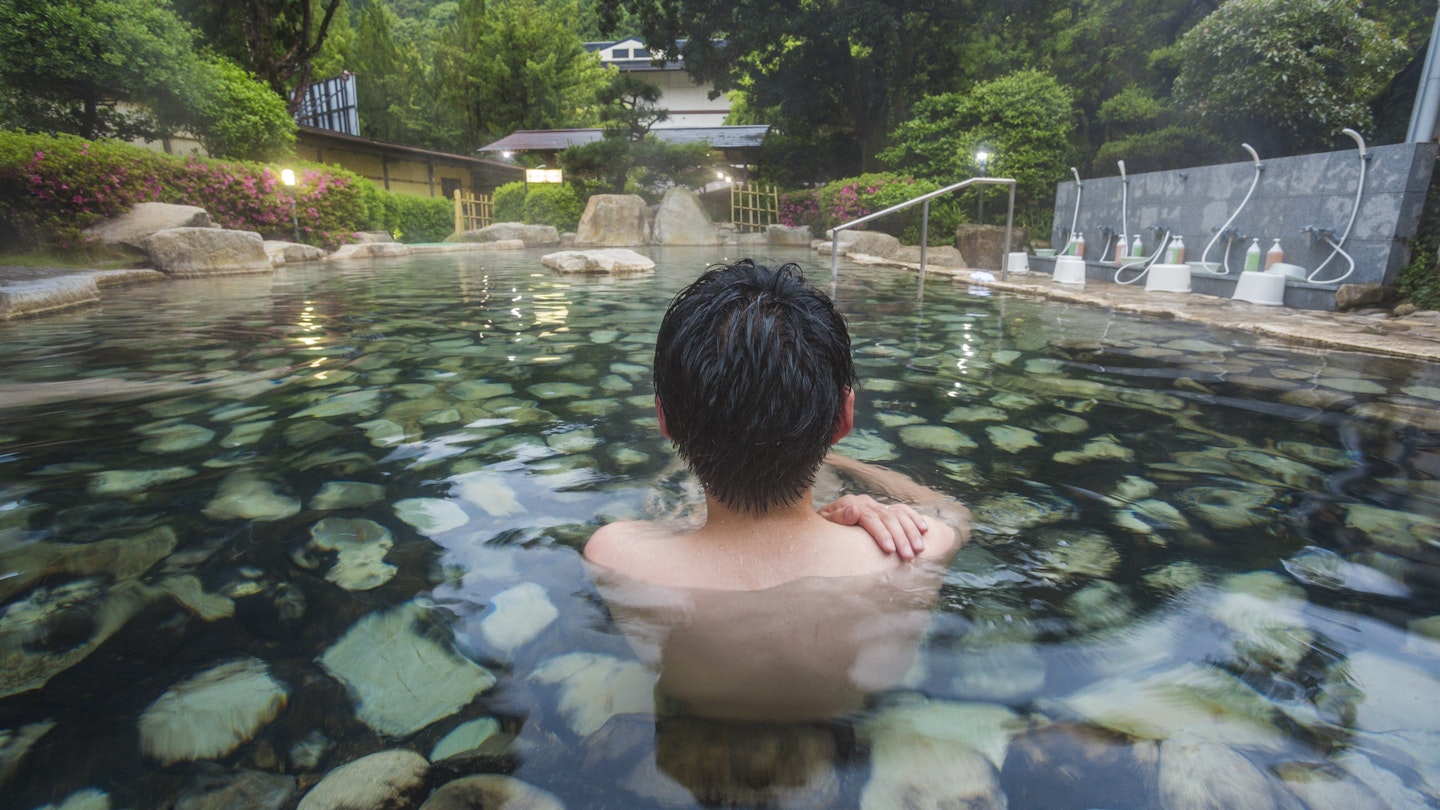Share
Oct 11, 2019 • 5 min read

There’s nothing quite like bathing in the mineral-rich waters of an onsen when in Japan. For generations, people have flocked to these ancient hot springs to rejuvenate their mind, body, and spirit. One place in particular, Wakayama Prefecture, is a nature-lover’s dream and an unspoilt spot to try out one of the country’s best-loved pastimes.
The Magic of Onsen
Japan’s natural hot springs can be found in their thousands, scattered in diverse locations all over the country, due to the significant volcanic activity that occurs there. Throughout the ages, people have visited onsen towns under the belief that the soothing waters offer various health benefits. The natural minerals found in the hot water are celebrated, and onsen come in different varieties, from natural pools (be careful of the temperatures at these locations – they can be scalding hot and should not be entered without proper research) to indoor baths in hotels, ryokan (traditional Japanese inns), and spas. Rotenburo are outdoor baths and are enjoyed for their authentic experiences, often offering beautiful views. In Japan, hot springs are celebrated for their healing properties and also serve as a prime social setting that allows bathers to interact with one another.
Wakayama’s Treasures
Thanks to its range of bathing options, Wakayama has earned a reputation as one of the best onsen destinations in Japan. With an abundance of retreats and resorts, it offers experiences such as two-person baths inside a well and a gigantic river bath that can accommodate up to 1000 people. Travelers can even enjoy a relaxing soak at foot baths as they dine.

Local legend tells a tale of Yonomine’s Tsubo-yu onsen and how it once cured a famous samurai in need of healing. While we can’t clarify if that’s accurate, it’s certainly true that the onsen offers plenty of rejuvenating qualities for the mind and body. Located in the middle of Yunomine, this UNESCO World Heritage hot spring is inside a small wooden shack built on an island in the river. It can be used privately (holding up to two people) for 30 minutes at a time on a first-come-first-served basis, and admission includes entry to one of the baths at Yunomine Public Bathhouse, which you can visit afterward.
In the mountain hamlets of Kawayu, thermal waters rise to the surface of a bathing river, while in Katsuura, rotenburo look out onto blue coves and islands. As well as having incredible beaches, the coastal town of Shirahama boasts some of Japan’s oldest and best-known onsen, including the open-air Shirasuna Onsen, located on the boardwalk in the middle of the town, and Sakino-yu, an onsen on a rocky outcrop with ocean views approximately 1km south of the main beach. Shirahama’s Ashiyu Alley in the trendy Ginza Alley offers foot baths allowing customers to rejuvenate their feet as they enjoy delicious local offerings.
Other highlights include Ryūjin Onsen, a historical hot spring settlement situated in the mountainous heart of the Kii Peninsula along the upper reaches of the Hidaka River; Watarase, an expansive complex in a forested valley that has rich sodium-chloride pools of varying temperatures, and Kawa-yu, where visitors can dig their own bath on the banks of the Oto River and take a dip in the massive Sennin-buro River Bath. Wakayama Prefecture has a dedicated website with a handy guide to some top onsen spots around the area.

Tips for the Uninitiated
Bathing in an onsen is a truly unforgettable experience. There are a few rules of etiquette to remember, but it shouldn’t be a deterrent. Like any foreign experience, taking some time to research customs and traditions can lead to a more relaxing and enjoyable time.
The first thing to note is Japan’s relationship with tattoos. Historically, body art has been linked with untoward dealings, and even today many onsen do not permit entry to people with visible tattoos; however, some places are tattoo-friendly and will advertise themselves as such. Additionally, there is a new website launching that allows travelers to search for body-art permitting onsen.
Make sure you take a shower before entering an onsen. Facilities will usually be provided, and you’ll see guests sitting on a stool and showering using a bucket along with soap and water.

The majority of onsen will have separate areas for male and female bathers, or different times allocated for each. Likewise, most do not permit swimwear; however, you’ll quickly get used to the freedom of bathing au naturel. Small hand towels can be used for modesty’s sake when getting in, but they should be left out of the water. Some people place them on their heads while they bathe. Large towels are left back in the changing rooms. It is advisable to drink some cold fresh water before and after bathing, as the hot temperatures can cause light-headedness. Aside from that, there’s nothing to do but relax and enjoy the therapeutic hot waters!
Getting to Wakayama
Wakayama is accessed by various trains, both rapid and local. Buses filter through Wakayama Station in the city to other areas across the prefecture. Train passes can offer significant discounts for international visitors, with special offers available from time to time with Japan Railway and the Nankai Electric Railway companies. Visitors can also take advantage of the Koyasan & Kumano Access Bus, which offers unlimited ride bus passes connecting the Koyasan area to the Kumano Sanzan heritage sites such as Tsubo-yu and Kawayu.
Produced by iBestTravel for Visit Wakayama. All editorial views are those of iBestTravel alone and reflect our policy of editorial independence and impartiality.




